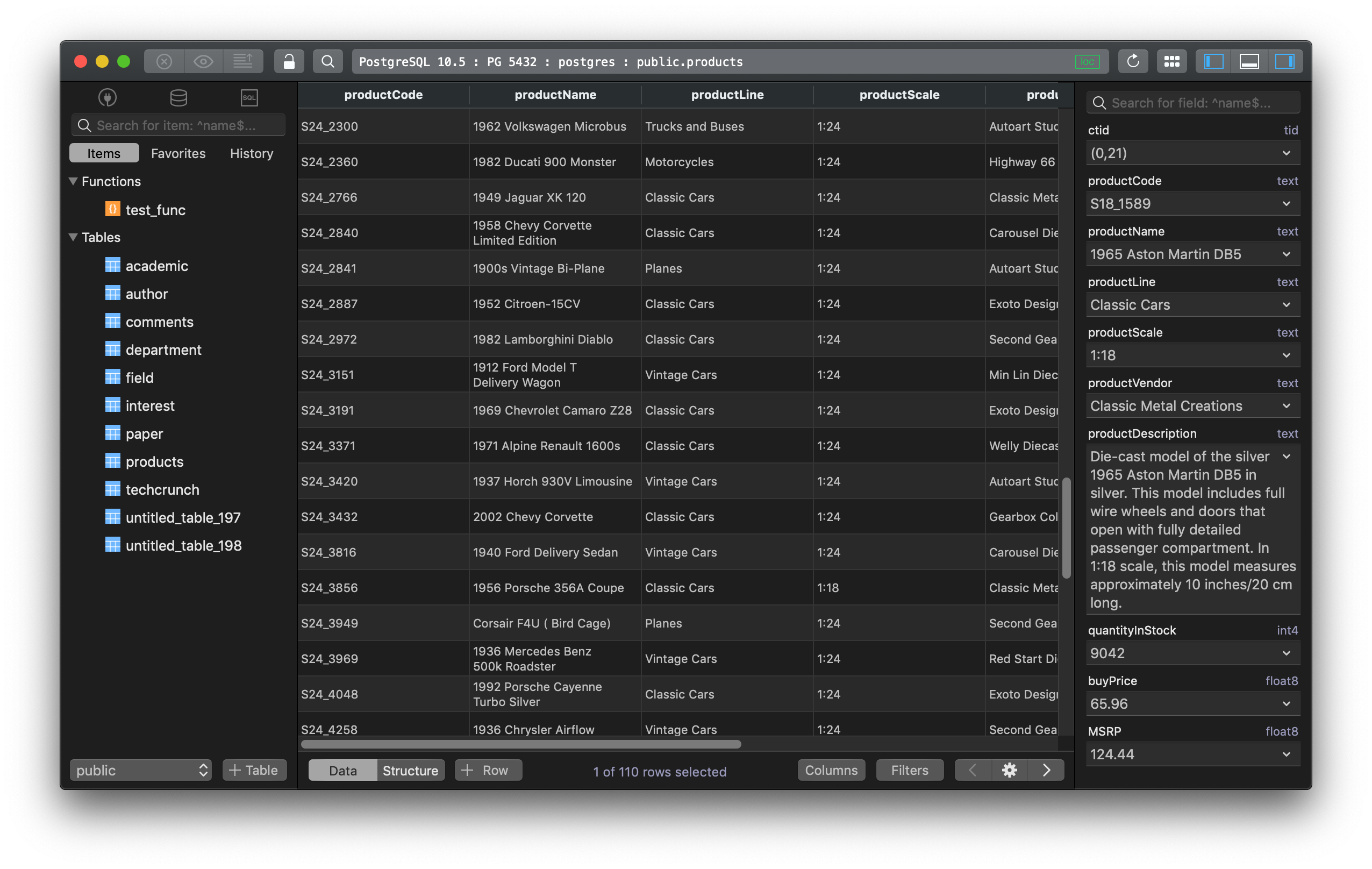
- Phpmyadmin postgresql how to#
- Phpmyadmin postgresql install#
- Phpmyadmin postgresql update#
- Phpmyadmin postgresql password#
This section will detail its history, features, and use cases. PostgreSQL is object-oriented, making it possible to extend data types to create your custom types, and it has support for almost any database. It was specifically designed for efficiency and can be integrated into almost any software. It’s also extendable, making it useful for anyone who needs enterprise tools. It is fully SQL-compliant and was built to be feature-rich. PostgreSQL is an open-source, object-relational database management system. ✅ Click to Tweet What Is PostgreSQL? PostgreSQL logo (Image source: Uberconf) Discover the two most used open-source databases for WordPress and their differences: PostgreSQL and MySQL. We’ll be focusing on PostgreSQL and MySQL for now. You can rest easy because there are a variety of open-source databases available which can help you track your data within WordPress. It even powers the website’s ability to load and execute.Īn ideal database should be flexible, cost-friendly, and scalable. It ensures everything is tracked, from the content on your blog to the comments and changes made by different users. The database system is essentially the backbone of your website. Without a WordPress database, your website won’t be able to function. While it isn’t necessary to have prior coding knowledge to use WordPress, it certainly does help to understand the different elements, including databases. Its easy-to-use layout makes it the perfect choice for beginners. You can now easily manage your PostgreSQL database from the web-based interface.More than a few businesses use WordPress to host their websites, a whopping 43% of all the websites on the internet! In addition to that, it accounts for around 60% of all deployed Content Management Systems (CMS). ConclusionĬongratulations! you have successfully installed PostgreSQL and PhpPgAdmin on Ubuntu 20.04 server. You should see the PhpPgAdmin dashboard in the following screen:įrom here, you can run any query for PostgreSQL database server.
Phpmyadmin postgresql password#
Provide your PhpPgAdmin username, password and click on the Login button. You should see the PhpPgAdmin login screen: Now, open your web browser and access the PhpPgAdmin web interface using the URL You should see the following screen: Next, restart the Apache service to apply the changes: systemctl restart apache2 Access PhpPgAdmin You should get the following output: Syntax OK Save and close the file then check Apache for any configuration error with the following command: apachectl configtest You can do it by editing the /etc/apache2/conf-available/nf configuration file: nano /etc/apache2/conf-available/nf So you will need to configure it for external access.
Phpmyadmin postgresql install#
You can install it with the following command: apt-get install phppgadmin -yīy default, PhpPgAdmin is accessible only from the localhost. Next, exit from the PostgreSQL shell with the following command: postgres=# \qīy default, PhpPgAdmin is available in the Ubuntu 20.04 default repository. Next, grant all the privileges to the pgadmindb with the following command: postgres=# GRANT ALL PRIVILEGES ON DATABASE pgadmindb to pgadmin Next, create a database and user with the following command: postgres=# CREATE USER pgadmin WITH PASSWORD 'password' Once login, you should see the following output: psql (12.4 (Ubuntu 12.4-0ubuntu0.20.04.1)) Next, you will need to create a database and user for PhpPgAdmin.įirst, log into the PostgreSQL with the following command: su - postgres

Sep 16 07:03:14 ubuntu2004 systemd: Finished PostgreSQL RDBMS.

Sep 16 07:03:14 ubuntu2004 systemd: Starting PostgreSQL RDBMS. Main PID: 2287 (code=exited, status=0/SUCCESS) Loaded: loaded (/lib/systemd/system/rvice enabled vendor preset: enabled)Īctive: active (exited) since Wed 07:03:14 UTC 33s ago

Next, verify the PostgreSQL status with the following command: systemctl status postgresql You can install it by running the following command: apt-get install postgresql -yĪfter installing PostgreSQL, start the PostgreSQL service and enable it to start after system reboot. Install PostgreSQL Serverīy default, PostgreSQL server is available in the Ubuntu 20.04 default repository. Once all the packages are updated, you can proceed to install PostgreSQL.
Phpmyadmin postgresql update#
You can update them with the following command: apt-get update -y Requirementsįirst, it is recommended to update your system's packages repository to the latest version.
Phpmyadmin postgresql how to#
In this tutorial, we will show you how to install PostgreSQL and PhpPgAdmin on Ubuntu 20.04 server. It provides an easy way to manage the PostgreSQL through the web interface. PhpPgAdmin is a web-based database management interface for PostgreSQL. Managing the PostgreSQL database from command-line is very difficult for any beginner user. It is specially designed for mission-critical applications. PostgreSQL is a free, open-source and one of the most advanced object-relational database management system.


 0 kommentar(er)
0 kommentar(er)
